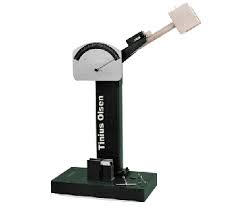The malleability of metals and their rigidity are excellent indicators of its strength and durability. In any event these two attributes by themselves are not enough to tell if the metal is ideal for clear-cut applications. It is equally important to know how the material will react in the event of an abrupt impact. This is known as the Indirect Tensile Strength of the asphalt material’s toughness. that isn’t set by tests of impact.
Peruse the following pages to learn the basics of impact testing. the purpose for which it’s used for, and how things are completed.
Toughness and versatility
The Low Limit Effect Testing Framework in India
Testing Framework Testing Framework
Imagine a material made of plastic. It will deform when subjected to force or impact. When it begins to change shape due to stress or impact is a sign of the material’s adaptability. It can be said that the material can be bent in the event that it isn’t able to bend effectively and it will only start to show signs of wear and wear after a considerable amount of time.
However, in the light of it being true that a substance is flexible, that means it is very. In order to be considered extreme, a sturdy blend of malleability and strength is essential. Materials with a high amount of strength and malleability is considered to be harder than one that has less malleability and strong.
The most effective method of estimating the actual durability of a material is to calculate the area beneath the pressure strain bend using the test of malleability. The value is described only as the material’s strength. This is stated in terms of the number in energy units for each volume. The toughness of the material corresponds to a slower energy retention of the material.
It is recommended to use an outline of the strain pressure to help determine the material’s limit on flexibility. Divide this outline in two parts. The left side is referred to as the reach that is flexible. The plastic reach is considered as extending to it is possible to go on the right. The area under the bend over powered measure the volume of energy that the material is able to hold without causing long-lasting damage.
The value is known as the opposition modus. The volume of energy or volume the material will hold (or the area that is covered by the entire outline) until breaking point is known as the strength level. This property has a primary place in the reach of plastic. A tiny portion of the energy consumed is regarded as a versatile energy
The factors that accompany them greatly affect the toughness of materials.
* Rate of Strain (or the speed of stacking)
* Indent impact
* Temperature
A particular metal may possess an acceptable level of toughness when placed under static load, however, it may fail when forced to endure the effect of a specific load. Both toughness and pliability will decrease when the speed of stacking becomes greater.
Another factor is the impact of indent. It is a result of the pressure circulation. Certain materials may demonstrate fair toughness when it is made to endure stress that’s uniaxial. However that when stress in a multiaxial states is produced by that there is a scoring the material will likely not be able to withstand the plastic and flexible distortions that result from different headings.
The third element that has the biggest impact on the toughness of a material is temperature. You’ll notice the fact that the toughness of the material and pliability decreases as temperatures decrease.
What are the main differences between Intense as well as Solid?
A material that has the ability to endure through a point of critical strength before cracking or disfiguring could be considered as significant areas of strength. It is therefore possible to declare that a particular material with an increased level of elasticity is strong.
However, it is the attribute that allows the body to protect itself from impacts. It is usually measured through the method of testing that is legitimate. When drawing an outline of a pressure strain, it will be visible in the lower portion of the graph, which leads to the breaking point.
The most solid material has the highest degree of rigidity. It is also the one that has the largest area in the graph can be considered to be the strongest material.
Therefore, the most solid material may not be the toughest and the reverse. In essence, strength doesn’t measure up to toughness.
The Strength in Tensile Indirect of Asphalt
The overall toughness of a system that is not completely fixed in stone is determined by the use of or one of the Izod or Charpy testing methods. Both are named after the pioneers who developed the test strategies.
The test for impact is completed by using a scoring example. In general, two types of scores can be used. The first is the standard V indent and the keyhole score. The two types of examples are able to be used in conjunction with Charpy as well as Izod.
When playing with in the Indirect Tensile Strength of Asphalt The example is set in an iron block so that it looks like an uncomplicated bar with supports on the closings. While doing so during an Izod test the model is held up by a poor routine. As a result some of the closings are open and appears as the cantilever the pillar.















